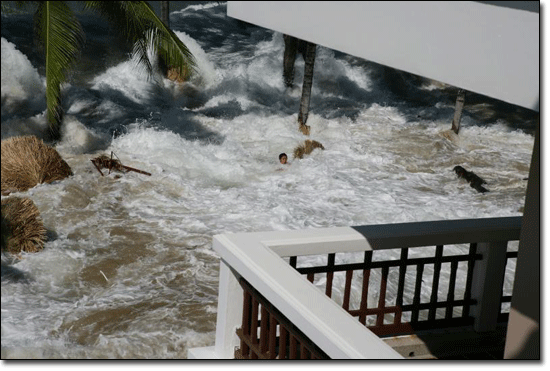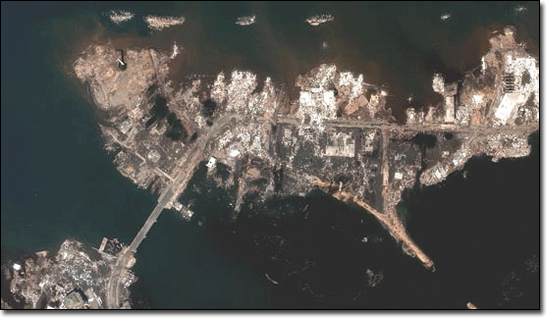Tsunami Sumatra 2004, Andaman Indonesia
2004 Sumatra-Andaman Earthquake and Tsunami
The earthquake that generated the great Indian Ocean tsunami of 2004 was an undersea megathrust earthquake that occurred at 7:59 am local time on Sunday, 26 December 2004. It was caused by subduction with an epicentre off the west coast of the Indonesian island of Sumatra. The quake itself is known by the scientific community as the Sumatra-Andaman earthquake. The resulting tsunami is given various names, including the "Boxing Day tsunami".
With a magnitude of Mw 9.1-9.3, it is the third largest earthquake ever recorded on a seismograph. The earthquake had the longest duration of faulting ever observed, between 8.3 and 10 minutes. It caused the entire planet to vibrate as much as 1 centimetre (0.4 inches) and triggered other earthquakes as far away as Alaska. According to the U.S. Geological Survey (USGS), the Sumatra-Andaman earthquake is estimated to have released the energy of 23,000 Hiroshima-type atomic bombs.
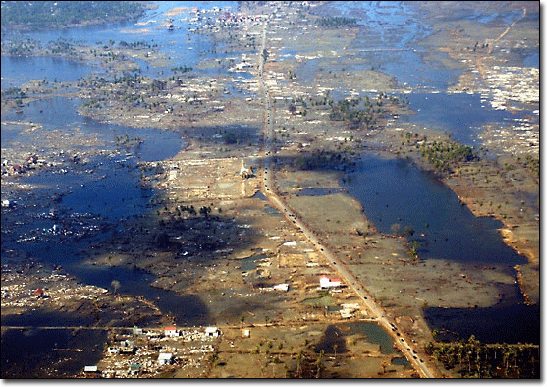
Aerial photo showing flattened houses in Banda Aceh, Indonesia, January 16, 2005, three weeks after a deadly tsunami devastated the island.
While Japan may have the longest recorded history of tsunamis, the sheer destruction caused by the 2004 Indian Ocean earthquake and tsunami event mark it as the most devastating of its kind in modern times.
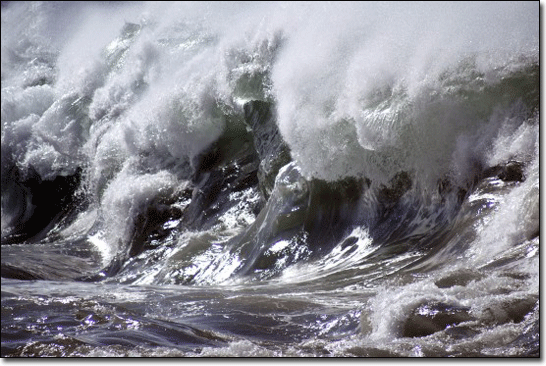
The December 26, 2004 Indian Ocean tsunami was caused by an earthquake that is thought to have had the energy of 23,000 atomic bombs.
Within hours of the earthquake, killer waves radiating from the epicentre slammed into the coastline of 11 Indian Ocean countries, damaging countries from east Africa to Thailand, killing over 230,000 people in fourteen countries, and inundating coastal communities with waves up to 30 meters (98 ft) high. It was one of the deadliest natural disasters in recorded history. Indonesia was the hardest-hit country, followed by Sri Lanka, India, and Thailand.
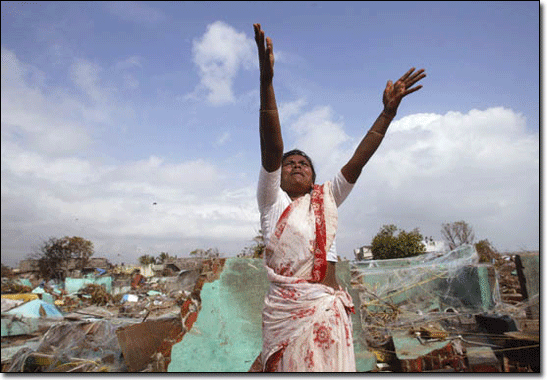
Woman in a tsunami-damaged village in Tamil Nadu, India, waving for assistance from a hovering helicopter, Dec. 31, 2004.
Despite a lag of up to several hours between the earthquake and the impact of the tsunami, nearly all of the victims were taken completely by surprise because there were no tsunami warning systems in the Indian Ocean to detect tsunamis or to warn the general populace living around the ocean.
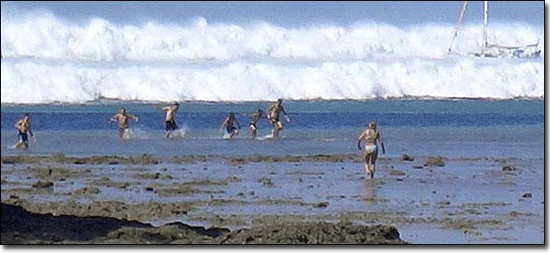
Why was the Sumatra tsunami so devastating? The Sumatra-Andaman Islands Earthquake on December 26, 2004, happened in an area with high population densities along the coasts where it struck with maximal force (see red colours in the simulated image below). Yet some areas were more so affected than others.
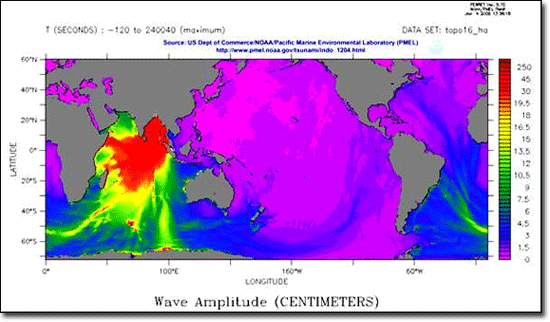
The worst affected areas had two things in common: they have neither experienced hurricanes nor tides. Thus people lived dangerously close to the water and often on ships that would not be seaworthy in areas where tropical cyclones are common. But from scientific observations we know today that tides and hurricanes are able to modify the coast in ways that may reduce tsunami damage. Combined with waves, and particularly those from storms, tides can erode the shoreline out, until a shore profile results that resists tsunamis. On such coasts, a tsunami won't be able to run inland as far as it did in Aceh, the region located on the northern tip of the island of Sumatra, where approximately 170,000 Indonesians were killed or went missing in the disaster, and approximately 500,000 were left homeless.
That is also the reason why the March 2011 tsunami in Japan caused predictably much damage where the coast had never experienced either substantial tides or storms.
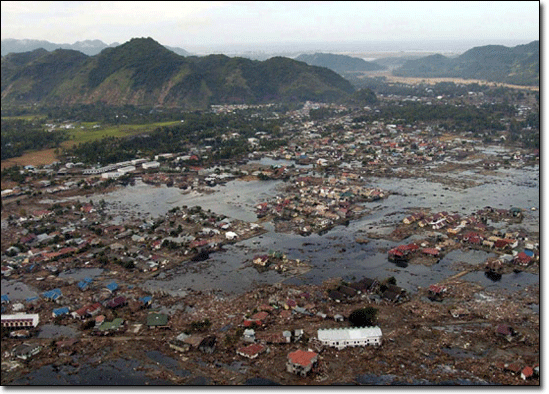
A 2004 Tsunami survivor story
It was boxing day 2004 and Mrs Rinaldiana was walking near her home in Banda Aceh, Sumatra. "Suddenly, I saw the buildings move, shaken hard," she said. People running from the shore shouted that the sea was rising.
Mrs Rinaldiana and her family sought shelter in a crowded two-storey house, but it was soon destroyed. "My daughter was hit by the collapsed house, and then she was gone, she told Professor Walter Dudley of the University of Hawaii. Mrs Rinaldiana was knocked unconscious. When she came to, the wave was carrying her and she was surrounded by debris. "I thought this was hell. I thought it was the end of the world," she said.
